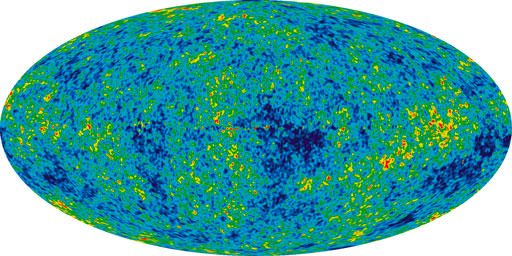[/caption]
The cosmological constant, symbol Λ (Greek capital lambda), was ‘invented’ by Einstein, not long after he published his theory of general relativity (GR). It appears on the left-hand side of the Einstein field equations.
Einstein added this term because he – along with all other astronomers and physicists of the time – thought the universe was static (the cosmological constant can make a universe filled with mass-energy static, neither expanding nor contracting). However, he very quickly realized that this wouldn’t work, because such a universe would be unstable … and quickly turn into one either expanding or contracting! Not long afterwards, Hubble (actually Vesto Slipher) discovered that the universe is, in fact, expanding, so the need for a cosmological constant went away.
Until 1998.
In that year, two teams of astronomers independently announced that distant Type Ia supernovae did not have the apparent luminosity they should, in a universe composed almost entirely of mass-energy in the form of baryons (ordinary matter) and cold dark matter.
Dark Energy had been discovered: dark energy is a form of mass-energy that has a constant density throughout the universe, and perhaps throughout time as well; counter-intuitively, it causes the expansion of the universe to accelerate (i.e. it acts kinda like anti-gravity). The most natural form of dark energy is the cosmological constant.
A great deal of research has gone into trying to discover if dark energy is, in fact, just the cosmological constant, or if it is quintessence, or something else. So far, results from observations of the CMB (by WMAP, mainly), of BAO (baryon acoustic oscillations, by extensive surveys of galaxies), and of high-redshift supernovae (by many teams) are consistent with dark energy being the cosmological constant.
So if the cosmological constant is (a) mass-energy (density), it can be expressed as kilograms (per cubic meter), can’t it? Yes, and the best estimate today is 7.3 x 10-27 kg m 3.
Ned Wright’s Cosmology Tutorial (UCLA) and Sean Carroll’s Cosmology Primer (California Institute of Technology) between them cover not only the cosmological constant, but also cosmology! NASA’s What Is A Cosmological Constant? is a great one-page intro.
Universe Today has many, many stories featuring the cosmological constant! Here are a few to whet your appetite: Universe to WMAP: LCDM Rules, OK?, Einstein’s Cosmological Constant Predicts Dark Energy, and No “Big Rip” in our Future: Chandra Provides Insights Into Dark Energy.
There are many Astronomy Cast episodes which include discussion of the cosmological constant … these are among the best: The Big Bang and Cosmic Microwave Background, The Important Numbers in the Universe, and the March 18th, 2009 Questions Show.
Sources:
http://map.gsfc.nasa.gov/universe/uni_accel.html
http://super.colorado.edu/~michaele/Lambda/lambda.html
http://en.wikipedia.org/wiki/Cosmological_constant

